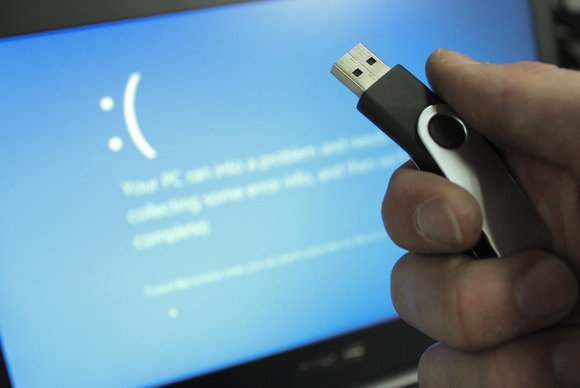Easily Create a Windows 10 Recovery Drive
Posted: November 15, 2016
[caption id="attachment_12900" align="alignright" width="259"]

Image from pcworld.com[/caption]
Many changes have come with Windows 10, Microsoft's newest operating system - some good, others not. Whatever operating system you use, everyone is aware that disaster can happen at any time, and you could risk losing access to your important files.
As with any operating system, it is important to know how to make a recovery drive in Windows 10 and what you can do with the drive once it's created.
Josh Norem, writer for PC World, shares how to create a Windows 10 recovery drive.
Everything you need to know about Windows 10 recovery drives
You never know when you’ll need a Windows recovery drive, so the time to make one is now—and it’s very easy to do.
A recovery drive is similar to the media you’d receive if you bought a pre-built system. Back in the day, PCs would ship with a CD or DVD that included an image of the system as it left the factory. If your PC’s OS went sideways, you could easily revert to the way things were on day one (though you’d lose all of your subsequently created data and applications, obviously). Nowadays manufacturers usually just put an image of the system as it left the factory on a hidden partition of your main drive.
A Windows recovery disk builds on this idea. In addition to letting you reinstall Windows, it includes several troubleshooting tools, which can be a lifesaver if your system won’t boot.
Some of these tools used to be part of the OS. If your PC failed to boot you were presented with a menu allowing you to try and boot into Safe Mode, or use “last known good configuration.” That’s no longer the case with Windows 10. Now you need these tools to reside on a separate, bootable USB key, and every person running Windows should keep one in a safe place with the label “in case of emergency.”
Read the entire article
Everything You Need to Know about Windows 10 Recovery Drives on
PC World.
 Image from pcworld.com[/caption]
Many changes have come with Windows 10, Microsoft's newest operating system - some good, others not. Whatever operating system you use, everyone is aware that disaster can happen at any time, and you could risk losing access to your important files. As with any operating system, it is important to know how to make a recovery drive in Windows 10 and what you can do with the drive once it's created.
Josh Norem, writer for PC World, shares how to create a Windows 10 recovery drive.
Image from pcworld.com[/caption]
Many changes have come with Windows 10, Microsoft's newest operating system - some good, others not. Whatever operating system you use, everyone is aware that disaster can happen at any time, and you could risk losing access to your important files. As with any operating system, it is important to know how to make a recovery drive in Windows 10 and what you can do with the drive once it's created.
Josh Norem, writer for PC World, shares how to create a Windows 10 recovery drive.